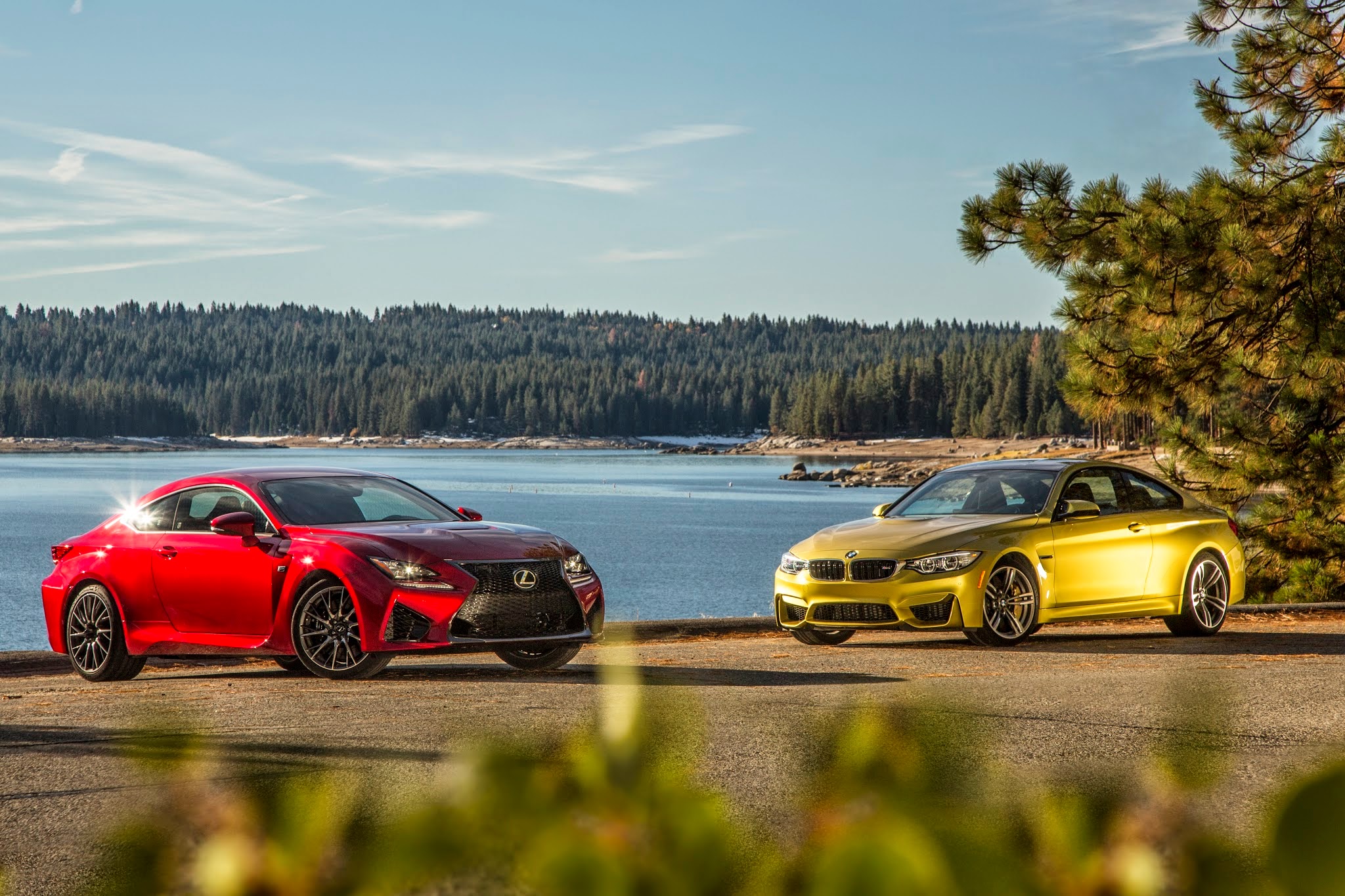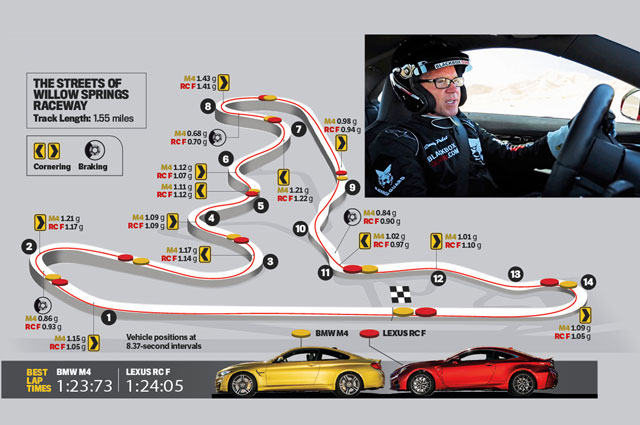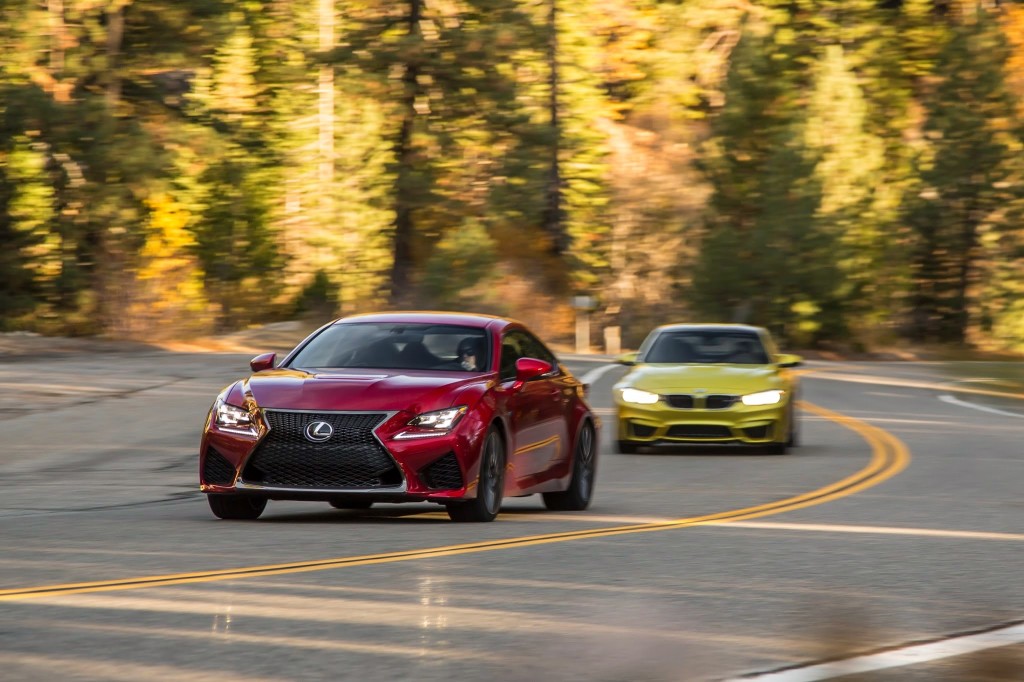They are both the same category. They are hot. They are fast. But, they they came from different continents. They are the definition that luxury cars or fancy cars can be very pure too. They are what the market, maybe, really misses a lot, passionate cars!
You can drift them too because of their Rear wheel drive differential. The makers of these two cars will tell you about lap lateral g’s and suspension kinematics, but the ease with which you
can destroy their rear tires in wild displays of immaturity says
differently.
Well, here we are, we have BMW and Lexus, and this is how we got here: The former decided at some point in the 1980s that it
would be neat if its sedan were faster than Mercedes-Benz’s sedan around a racetrack, and a legend was born. Flash-forward 30 years, and down the family tree falls the M4. It’s grown substantially in size and weight, but it’s never been faster or as capable.
Lexus is the relative newcomer, creating a performance division in 2006 with its own letter: F. It stands for Fuji Speedway, where Lexus performs vehicle development.
The car here wearing that badge is the RC coupe, and regardless of the official definition, after driving it you might
think F means Fun (that’s what we told you about in the beginning of this article).
Funky best describes its design. The outwardly aggressive, in-your-face RC F looks good from a distance; its
proportions and bolder cues give an appearance of something between LFA and IS F, so you can’t ask more for more, because, here we have a mixture of two of the most beautiful cars in the market.
Inside, the quantity of details and quality of materials make the RC F a far more interesting car to sit in.The LFA-inspired shifting digital instrument cluster is just cool, and it makes neat changes when you switch between driving modes. Put the car in the most aggressive setting and the tach grows and centers itself in the instrument cluster. It also has some fun toys, like a G meter that draws your lateral and longitudinal peaks in a circle. It challenges you to make that circle bigger by pushing the car harder.
On the other side, the BMW stands clean and nice, respecting the tradition.
This is the fast car for people who want to blend in. Past the smattering of carbon fiber inside, the new seats
offer good support, the steering wheel feels good, and we always welcome a head-up display, but the M4’s interior feels remarkably plain after the RC F. We respect the simplicity, but there is an absence of occasion.
In a strange turn of events, it’s the Japanese car with the big V-8 and the German one with the small-displacement turbo mill. And with this comes a functioning demonstration of the advantages turbochargers bring and the things they take away.
The M4 is powered by a 3.0 litter twin-turbocharged inline-6 engine, producing 425hp and 300nM of torque the second you apply full throttle and pulling strongly to redline. It feels overpowered in the best way, as if its engine were one size over the needs of the chassis. But while the power itself is fun, the sound of applying it pales in comparison to the Lexus. At the right engine speed and throttle load, a flap in the RC F’s engine bay exposes the cabin and exterior to a deep intake bellow that’s topped at redline with a soft beep, telling you it’s time to do it all again in the next gear. It doesn’t sound pretty but is wonderfully aggressive. The M4’s timbre sounds mechanical and grainy in contrast, lacking depth.
Neither of these two has a clutch pedal. While the M4 comes standard with a six-speed manual, ours had the optional
seven-speed twin-clutch gearbox, and the Lexus’ eight-speed is the only transmission available (unfortunately). Both work well enough to make you seriously debate the worth of a manual, offering responsive up-shifts and
well-controlled downshifts. In manual mode, the RC F’s transmission locks up the torque converter from gears second and up. Standard RC Fs come with a Torsen differential, but ours employed a driver-controllable torque-vectoring differential that biases power through a pair of electric motors and planetary gear-sets.
For as different as the two look and sound, both cars are similar in size, sharing dimensions within tenths of an inch.
So, it’s surprising to learn that the Lexus weighs 200 KG more than the BMW. According to Jonny Lieberman, the F team aimed to increase the RC F’s rigidity but had to keep costs down. The
resulting chassis is part GS (front), last-gen IS convertible (middle),
and current IS (rear). The byproduct is weight. Lexus combats this with 42 hp more than the BMW, which brings the weight-to-power of both cars within 1 kg/hp. Alas, the M4 remains the faster car in a lot of tests.
It’s less frustrating than before but still more complicated than it should be launch control and broader torque band help it pass the quarter mile 0.5 second and 9 km/h faster than the Lexus.
But, forgetting the numbers, both are very nice car that anybody would like to have a sit behind those steering wheels. +400 horsepower, are quite enough to make you leave everything behind and to enjoy the moment!





Leave a Reply
You must be logged in to post a comment.